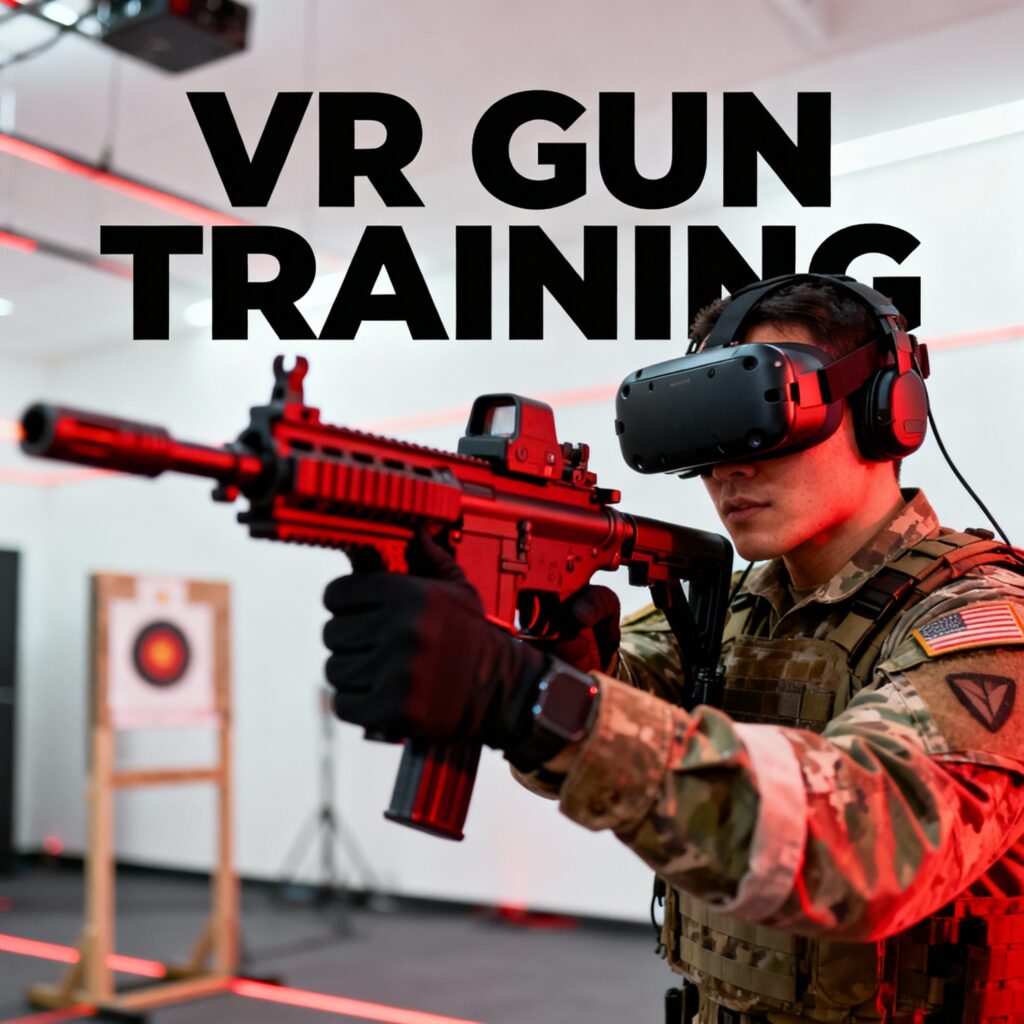Modern defense forces—across the Army, Navy, and Air Force—are embracing Virtual Reality (VR) as a powerful tool for training, combat preparation, and rehabilitation.
VR provides soldiers with immersive simulations that improve readiness, reduce risks, and cut costs, making it one of the most valuable assets in modern warfare.
11 Advantages of using VR in the military, with real-world examples

1. Realistic Combat Training for the Army
VR enables army soldiers to experience battlefield conditions such as urban warfare, jungle combat, or desert operations.
Example: Soldiers can train for urban counter-terrorism missions in a virtual city environment, practicing entry tactics and hostage rescues.
Need Solutions Check out – Military Training Simulator
2. Navy & Maritime Training
VR creates ship navigation simulators, submarine operations, and emergency response drills that prepare naval forces for real missions.
Example: Naval crews can practice fire control drills on a virtual battleship, improving coordination without putting the vessel at risk.
3. Air Force Flight Simulators
Virtual Reality Air Force Simulators train pilots for high-stakes scenarios, aerial dogfights, and emergency landings.
Example: Air Force cadets use VR to simulate a mid-air refueling mission, enhancing precision and focus.
4. VR Excavators Simulator for Defense
Heavy machinery like excavators is crucial for military engineering, rescue, and combat support. VR simulators allow soldiers to practice operating them safely.
Example: Engineers use VR excavator simulators to practice clearing rubble in disaster-hit zones, preparing them for humanitarian missions.
5. IED Detection & Neutralisation Training
Virtual Reality modules for IED search, detection, and neutralization train soldiers in spotting and disarming explosives.
Example: Soldiers practice roadside bomb detection in VR patrol scenarios, learning to identify hidden threats before deployment.
6. Cost-Effective Training Across Forces
VR cuts costs by replacing physical ammo, fuel, and equipment with reusable digital simulations.
Example: Instead of flying real jets, Air Force cadets train in VR flight simulators, saving millions in fuel and maintenance costs.
7. Safe Learning Environment
VR provides risk-free environments where soldiers can train in dangerous scenarios like bomb disposal or underwater missions.
Example: Divers in the Navy use VR to simulate deep-sea repairs on submarines without the dangers of actual underwater pressure.
8. Stress & Combat Readiness Training
Virtual environments simulate battlefield chaos to train soldiers in decision-making under extreme stress.
Example: VR recreates a noisy battlefield with gunfire and explosions, helping soldiers practice staying calm and executing missions.
9. Medical Training for Battlefield Emergencies
Military doctors and medics use VR for trauma care, battlefield surgeries, and casualty evacuations.
Example: Medics train in VR on treating multiple injured soldiers after a blast, practicing triage and quick medical response.
10. PTSD Therapy & Veteran Rehabilitation
VR is used for Post-Traumatic Stress Disorder (PTSD) therapy by safely re-exposing veterans to controlled scenarios.
Example: A veteran relives convoy ambush situations in VR therapy, helping them process trauma in a safe clinical setting.
11. Remote & Collaborative Training
VR connects soldiers across locations, enabling joint training exercises without travel.
Example: Army units in India and Air Force pilots abroad can train together virtually on a joint mission simulation.
Conclusion
From Army ground combat training and Navy navigation drills to Air Force flight simulators, IED detection modules, and VR excavator training, virtual reality is transforming modern defense. It makes training safer, cheaper, and more effective—while also supporting soldiers’ rehabilitation after service.
VR is not just the future of defense—it’s the present backbone of modern military readiness.
FAQs
How is VR used in the Army, Navy, and Air Force?
Army: Combat training, IED neutralization.
Navy: Ship navigation, submarine simulations.
Air Force: Flight simulators, aerial combat drills.
What is a VR Excavator Simulator for Defense?
It’s a virtual training module where soldiers practice operating heavy machinery like excavators for rescue, construction, and combat support tasks.
Can VR really help in IED detection training?
Yes, VR simulates real roadside bomb threats, allowing soldiers to practice identifying and neutralizing explosives safely.
How do VR Air Force simulators benefit pilots?
They provide lifelike missions—like mid-air refueling or emergency landings—that sharpen pilot skills without real-world risks.
Is VR only for training, or also for rehabilitation?
Both. It enhances soldier training and also supports PTSD therapy and veteran rehabilitation.

